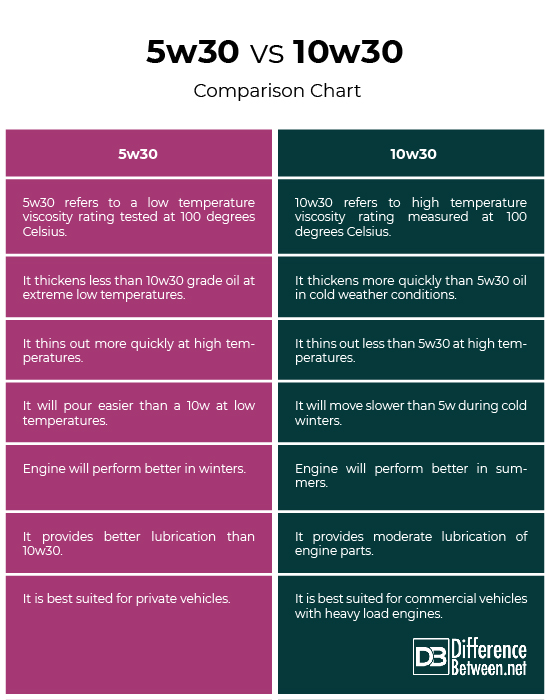Draining your transmission fluid is recommended as it helps remove contaminants and refresh the fluid. Avoid flushing, as it can cause debris to circulate and potentially harm the transmission.
Regular maintenance is crucial to ensure optimal performance and longevity of your vehicle’s transmission system. When it comes to transmission fluid, ensuring it is clean and at the proper level is essential for smooth gear shifts and overall performance. Neglecting fluid changes can lead to increased friction and overheating, potentially causing long-term damage.
By following manufacturer recommendations and performing routine fluid maintenance, you can extend the lifespan of your transmission and avoid costly repairs. Remember, a simple drain and refill can go a long way in preserving your vehicle’s transmission health.
The Role Of Transmission Fluid
Draining your transmission fluid is essential as it removes old, degraded fluid that can cause increased friction and overheating if not changed regularly. However, be cautious as a full flush can force debris through the transmission, potentially causing more harm than good.
Regularly draining and refilling the fluid is recommended to maintain optimal transmission performance.
What Is Transmission Fluid?
Transmission fluid is a vital component of your vehicle’s transmission system. It serves multiple purposes, including lubricating the various moving parts of the transmission, cooling the system, and facilitating smooth gear shifts. The fluid is typically red or pink in color and has a distinct viscosity that allows it to flow smoothly through the transmission.The Importance Of Regular Maintenance
Regular maintenance of your transmission fluid is crucial to ensure the optimal performance and longevity of your vehicle. Over time, transmission fluid can become contaminated with dirt, debris, and metal shavings, which can hinder its ability to lubricate and protect the transmission components effectively. This can lead to increased friction, heat buildup, and potential damage to the transmission system.When Should You Drain Your Transmission Fluid?
Draining the transmission fluid is an essential part of regular maintenance. While some manufacturers claim that their transmission fluid is “lifetime,” it is still recommended to change the fluid at regular intervals to prevent any potential issues. The exact frequency of fluid changes may vary depending on the make and model of your vehicle, so it’s best to consult your owner’s manual or a trusted mechanic for specific recommendations.The Risks Of Not Draining Your Transmission Fluid
Failing to drain the transmission fluid at appropriate intervals can have detrimental effects on your vehicle’s transmission system. Over time, the fluid can break down, lose its lubricating properties, and accumulate harmful contaminants. This can result in increased friction, excessive heat, and accelerated wear and tear on the transmission components. Ultimately, neglecting to change the transmission fluid can lead to costly repairs or even the need for a complete transmission replacement. In conclusion, maintaining the proper level and quality of transmission fluid is crucial for the smooth operation and longevity of your vehicle’s transmission system. Regularly draining and replacing the fluid at recommended intervals can help prevent potential issues and extend the lifespan of your transmission. Don’t overlook the importance of this simple yet essential maintenance task.
Credit: blog.amsoil.com
Drain Vs. Flush
When it comes to maintaining your car’s transmission, the debate between draining and flushing the transmission fluid is a common one. Both methods have their own set of pros and cons, and understanding the differences is essential for making an informed decision.
Understanding The Differences
Before deciding whether to drain or flush your transmission fluid, it’s important to understand the distinction between the two processes. When you drain the fluid, only a portion of the old fluid is removed, typically around 30-40%. On the other hand, a flush involves completely removing all the old fluid and replacing it with new fluid.
Pros And Cons
Draining the transmission fluid is a simpler and less expensive process compared to a full flush. It’s also less risky in terms of dislodging debris and causing potential damage to the transmission. However, flushing the fluid ensures that all the old, potentially contaminated fluid is completely replaced with new fluid, offering better overall protection for the transmission.
Signs Your Transmission Fluid Needs Changing
Signs your transmission fluid needs changing include burnt smell, dirty color, or grinding gears. Regular maintenance avoids costly repairs. Always consult a professional for the best advice.
Signs Your Transmission Fluid Needs Changing Regular maintenance of your vehicle is essential to keep it running smoothly. One of the critical components of your car is the transmission system, which relies on transmission fluid to function correctly. Over time, the transmission fluid can break down and become less effective, potentially leading to significant problems down the line. To prevent these issues, it’s essential to know when your transmission fluid needs changing. Here are some warning signals that your transmission fluid may need to be changed: H3: Warning Signals – A burning smell coming from your vehicle – Difficulty shifting gears or hesitation when accelerating – Unusual noises, such as whining or buzzing – Transmission slipping or grinding – Leaking transmission fluid If you notice any of these warning signals, it’s important to have your transmission fluid checked promptly. H3: Checking Fluid Condition To check the condition of your transmission fluid, follow these steps: 1. Park your car on a level surface and turn off the engine. 2. Locate the transmission fluid dipstick (refer to your vehicle’s owner manual for its location). 3. Remove the dipstick and wipe it clean with a lint-free cloth. 4. Reinsert the dipstick and remove it again, this time checking the color and level of the fluid. If the fluid is dark brown or black and has a burnt smell, it’s time to have it changed. Clean transmission fluid should have a pinkish-red color and a sweet smell. Regularly checking and changing your transmission fluid is essential to keep your vehicle running smoothly and prevent costly repairs down the line.The Debate: To Change Or Not To Change
When it comes to transmission fluid, there is a ongoing debate on whether it should be changed or not.
Myths And Facts
- Myth: Lifetime Transmission Fluid
- Fact: Transmission fluid needs to be changed periodically.
Expert Opinions
- Some experts suggest regular transmission fluid changes.
- Others caution against unnecessary fluid flushes.
Is it bad to drain transmission fluid? A transmission fluid flush can cause damage by circulating debris. Changing it too late can also lead to issues.
Why do people say never change transmission fluid? Old fluid can aid friction, and changing it might cause problems.
What happens if you don’t change your transmission fluid? Overheating and other issues can occur due to degraded oil.
How Often To Change Transmission Fluid
Regular maintenance of your vehicle’s transmission fluid is crucial to ensure its optimal performance and longevity. Understanding how often to change transmission fluid can help you avoid costly repairs and extend the lifespan of your vehicle’s transmission.
Manufacturer Recommendations
Manufacturers typically provide specific guidelines regarding the frequency of transmission fluid changes. These recommendations can usually be found in the owner’s manual or maintenance schedule provided by the manufacturer. Adhering to these guidelines is essential for preserving the warranty and ensuring the proper functioning of the transmission.
Factors Affecting Frequency
Several factors influence the frequency at which you should change your transmission fluid:
- Driving Conditions: Heavy towing, frequent stop-and-go traffic, and extreme temperatures can accelerate fluid degradation, necessitating more frequent changes.
- Fluid Type: Different types of transmission fluid have varying lifespans, with synthetic fluids generally lasting longer than conventional ones.
- Vehicle Age and Mileage: Older vehicles or those with high mileage may require more frequent fluid changes to mitigate wear and tear on the transmission.

Credit: aston1936.com
Step-by-step Guide To Draining Transmission Fluid
If you’re wondering whether you should drain your transmission fluid, the answer is yes. Over time, transmission fluid can become contaminated and less effective at lubricating and cooling the transmission. Follow a step-by-step guide to safely drain and replace your transmission fluid for optimal performance.
Step-by-Step Guide to Draining Transmission Fluid If you’re wondering whether you should drain your transmission fluid, the answer is yes. Over time, transmission fluid can become contaminated with metal shavings, dirt, and other debris, which can cause damage to your transmission if left unchecked. However, draining your transmission fluid can be a bit of a daunting task, especially if you’re not familiar with how to do it. That’s why we’ve put together a step-by-step guide to help you through the process.Tools You’ll Need
Before you begin, you’ll need to gather a few tools to help you with the job. Here’s what you’ll need:- Socket wrench set
- Oil drain pan
- Funnel
- New transmission fluid
- New transmission filter (if necessary)
The Process
Now that you have your tools, it’s time to get started. Here’s how to drain your transmission fluid:- Locate the transmission fluid pan and remove the bolts around the perimeter of the pan using your socket wrench set.
- Slowly lower the pan, being careful not to spill any fluid.
- Allow the fluid to drain completely into your oil drain pan.
- Remove the old transmission filter (if necessary) and replace it with the new one.
- Clean the transmission pan and magnet to remove any debris.
- Reinstall the transmission pan and bolts, ensuring they are tightened to the manufacturer’s specifications.
- Using your funnel, slowly add the new transmission fluid to the transmission through the dipstick tube.
- Start the engine and let it run for a few minutes to circulate the new fluid.
- Check the fluid level and add more if necessary.
The Risks Of Neglecting Transmission Fluid
Neglecting transmission fluid can lead to serious issues such as overheating and increased friction, potentially causing long-term damage to the transmission system. Regularly draining and replacing the transmission fluid is essential to maintain optimal performance and prevent costly repairs.
Potential Damages
Driving with old transmission fluid can lead to severe damages.
- Increased friction can damage internal components.
- Heat buildup can cause parts to warp or fail.
- Sludge buildup can block passages and lead to malfunctions.
Long-term Consequences
Ignoring transmission fluid maintenance can have lasting effects.
- Transmission may start slipping or shifting roughly.
- Overall performance and fuel efficiency may decrease.
- Expensive repairs or even transmission failure could occur.
Making Your Transmission Fluid Last Longer
Proper maintenance is crucial to extending the lifespan of your transmission fluid. By following some simple tips and knowing when to seek professional help, you can ensure that your transmission fluid lasts longer and keeps your vehicle running smoothly.
Maintenance Tips
Here are some essential maintenance tips to help prolong the life of your transmission fluid:
- Regularly check the fluid level and condition
- Follow the manufacturer’s recommended service intervals
- Use the correct type of transmission fluid
- Keep an eye on the transmission temperature
- Address any leaks promptly
- Ensure proper alignment and balance of your vehicle’s wheels
When To Seek Professional Help
While regular maintenance can go a long way in preserving your transmission fluid, there are instances when seeking professional help is necessary:
- Experiencing rough or delayed shifting
- Noticing unusual noises or vibrations
- Observing fluid leaks or discoloration
- Encountering warning lights on the dashboard

Credit: www.reddit.com
Conclusion
When it comes to draining your transmission fluid, it is important to consider the potential risks and benefits. While a simple drain and refill can help maintain the health of your transmission, a full flush may cause more harm than good.
It is crucial to follow the manufacturer’s recommendations and consult with a professional if you are unsure. Regular maintenance and fluid changes can help extend the lifespan of your transmission and ensure smooth operation. Ultimately, the decision to drain or flush your transmission fluid should be based on careful consideration and expert advice.


